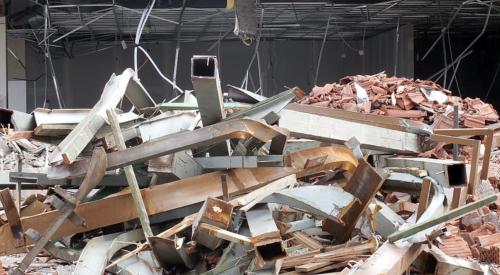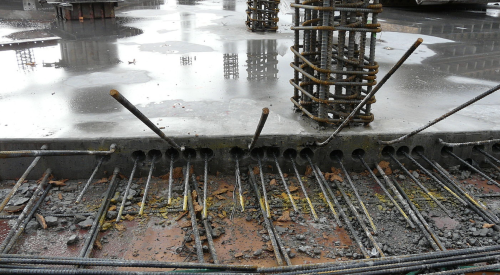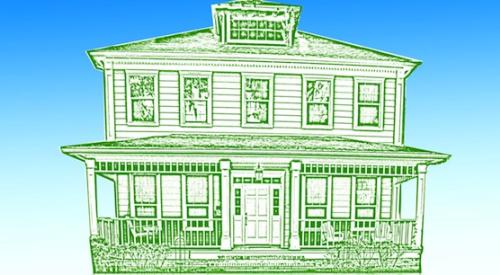There's an incredible amount of airtime being given to green, and I hear many questions being asked about whether it's a load of hype or whether it has legs to stick around. I believe it will become mainstream, but the question is when.
The need for greener homes is one issue where consumers and the government seem to be on the same page. But, the speed with which the housing market shifts will really depend heavily on you, the builder.
If you build it, they will comeAs a leader within a production home-building company, you can't afford to not believe in green. The market for green homes is expected to reach $20 billion in the next five years, according to a 2006 NAHB study, "Residential Green Building SmartMarket Report." Although lower energy bills were cited as the most popular reason for going green, more than 50 percent of the consumers polled also said they would purchase a new green home or remodel accordingly because it would be healthier for their families and the environment.
If you look at the statistics, our industry's impact on the environment is staggering. According to the U.S. Department of Energy, the residential sector accounts for 22 percent of the total energy consumed in the U.S., 74 percent of the water, and 21 percent of carbon dioxide emissions.
If you build green, you can reduce these negative impacts while providing added benefits to your homeowners in the form of reduced operating costs and a better overall quality of life — positioning yourself as a leader in the market. You have a responsibility, ultimately, to do the right thing. But, where should you start?
What is Green?
 |
Over the past 15 years, our sister company, IBACOS, has been researching how to build more energy-efficient, environmentally friendly homes, working with the DOE's Building America program, leading homebuilders and major product manufacturers. At the same time, both IBACOS and BuildIQ have been working in the field with housing's giants, helping them solve construction quality issues and align their teams around best practices. While part of what we do is aspirational and another is practical, all of our efforts are focused on helping builders improve performance by enhancing the safety, health, durability, comfort and efficiency of their homes.
Given this experience, I'd argue that a home isn't green unless it's designed and built for higher performance. A high-performance home is one that achieves high levels of energy efficiency while also addressing the fundamentals: water management, building durability, efficient use of resources (land, time and materials), proper HVAC system design and installation, etc. Green products can be added, but whole-house performance and durability are the real keys to green. If you use some of the green building checklists available, you can get enough "points" to be green. But, if you ignore the fundamentals, you'll be shooting yourself in the foot.
Say, for example, you've added green features such as wood framing from certified sustainably-harvested sources, low VOC paint, bamboo flooring and solar panels, but you haven't installed housewrap and window flashing to protect your home from water intrusion. You may have scored well on the checklist, but your house isn't truly green. Down the road, you may have to replace those floors along with framing, insulation, drywall, and any other building materials that are affected by water damage. This could cost you anywhere from $10,000-$50,000 per home.
Like a finely tuned car, a high-performance house is greater than the sum of its parts. If you take a building science-based, systems integration approach, considering how all of the systems of the house (foundation, framing, insulation, HVAC, etc.) work together during design and production, you can reduce your warranty claims and increase the green factor of your homes at the same time. This approach will allow you to consider cost trade-offs and deliver a better home more cost effectively.
How Do I Get Started? Who Can Help Me?When you decide to build green, you are adding a new product to your offering. You'll need to make adjustments to design, purchasing, construction and other processes to effectively build for performance.
Here are four steps you can follow to get the ball rolling.
- Set realistic goals. A good measure for determining how green your homes are relates to energy efficiency. Take a look at what you are doing now. If you're just achieving code, which means that you are building to the lowest level of energy efficiency allowed, it would be difficult to shoot for 50 percent greater energy efficiency, for example.
It's best to take an incremental approach. At a minimum, many green programs require that houses meet the EPA's EnergyStar for Homes level of performance, which is typically 20–30 percent more efficient than standard homes. A few resources I'd suggest you check out: Building America's climate-specific best practice guides, the Energy and Environmental Building Associations' criteria for energy and resource efficient building, NAHB's Green Building Guidelines, and LEED for Homes information from the U.S. Green Building Council. No matter which approach you take, be sure to incorporate a comprehensive water management strategy so that the houses you build don't end up moldy and rotting away. - Engage your team. To successfully increase performance, you will need to involve several members of your team. Be sure to engage representatives from building science; architecture and design; purchasing; marketing and sales; construction; your trades; and customer service in the process from the planning phase all the way through to measuring the performance of the home.
- Seek outside help and training. If you don't have a building science guru within your company, a great resource is EEBA's Houses That Work Educational Series, an in-class training program led by some of the foremost building scientists in the country. The NAHB and USGBC also offer in-person training. If you're strapped for time or want to train a large group from your organization, you can also leverage online courses to build for better performance.
- Start small and build from there. This will be a learning process. Take baby steps and get your feet wet with one home. See what your team and trades are capable of. Use this home as an opportunity to gauge homeowner interest, see what features they are willing to pay for, set the standards you want to meet at a broader level and refine your process to more cost-effectively and efficiently build for performance in the future.
Once you're comfortable, expand your green building efforts. Bring your team of experts back in to help you adopt high performance building practices as a core component of your company.
What's it Cost?The Building America program has found that you can build homes, in a cost-effective manner that use 20-30 percent less energy. You can cover the incremental cost of upgrades by increasing the purchase price accordingly.
Actual costs of building for performance will vary, depending on what climate you're building in and what features you choose. Here's an example cited by Duncan Prahl, director of IBACOS' research team, to give you an idea. Say you're building a home in the Mixed-Humid climate to the 30 percent energy savings level. You've added all of the upgrades recommended by the Department of Energy in the table to your location, and the incremental cost of the upgrades is $4,000. It's a safe bet that your homeowners will finance their new home, allowing them to amortize the cost of improvements. If they have a 30-year mortgage with a 7 percent interest rate, the $4,000 increase in their purchase price will translate to an additional $17.58 in payments per month. Their green features will reduce their monthly energy bills by $60.25. In the end, your homeowners could save more than $500 per year.
If you're curious about the cost differences to achieve even higher energy efficiency, say 40 or 50 percent, they're broken down in the second table. In all three cases, you'd be providing a better home that would cost your homeowners less money. It should be a win-win situation.
A Greener FutureSo, with its potential benefits for the homeowner, the builder and the environment, I believe that green isn't just a fad; it's the future of home building. If you design and build for higher performance, you'll have a better end product, fewer warranty issues and happier customers. But remember, when you call your homes green, you'll raise your homeowners' expectations. Be sure you can deliver. A building-science-based, systems-integration approach is your best bet.
BuildIQ provides online training on best practices in home building to enable builders to take their business to the next level of quality and performance. More information can be found at www.buildiqu.com.
| CODE | BASE EFFICIENCY (30%) | |
| INSULATION | ||
| Walls | R-19 | R-19 |
| Roof | R-38 | R-40 |
| Basement | R-10 | R-10 |
| WINDOWS | ||
| U-Value | 0.45 | 0.30 |
| SHGC | 0.55 | 0.37 |
| Double-glazed, low-e BA Best Practices Guide, Vol. 4 | ||
| LIGHTING | ||
| % CFL | 00% | 50% |
| HEATING | ||
| Furnace, AFUE | 80% | 90+% |
| Tight, well insulated ductwork | ||
| AIR CONDITIONING | ||
| SEER | 13 | 14 |
| VENTILATION | ||
| None | Exhaust | |
| APPLIANCES | ||
| Standard | Standard | |
| WATER HEATER | ||
| Tank-Gas | Tank-Gas | |
| Energy Factor | 0.55 | 0.61 |
| AIR SEALING | ||
| Standard | BA Best Practices Guide, Vol. 4 | |
| Source: National Renewable Energy Laboratory | ||
| Base Efficiency (30%) | High Efficiency (40%) | Premium Efficiency (50%) | |
| Mortgage Increase | $4,000 | $7,000 | $13,000 |
| Savings on Monthly Utility Bill(relative to IECC - 2003) | $60.25 | $76.58 | $96.83 |
| Increase in Monthly Mortgage Payments(based on 30-year mortgage, 7% APR) | $17.58 | $34.25 | $58.83 |
| Net Monthly Savings | $42.67 | $42.33 | $38.00 |
| Source: National Renewable Energy Laboratory | |||











